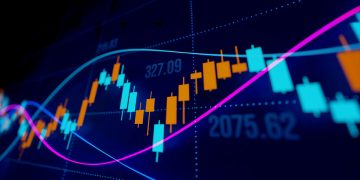The Inequality Conundrum and Equity Markets
Income inequality has become one of the defining economic and social issues of the 21st century. While equity markets have generally soared over the past decade, wealth concentration has reached historic highs in many developed and emerging economies. As investors and policymakers grapple with the implications of this divergence, one key question has begun to emerge: can rising income inequality impact long-term equity returns?
Traditionally, stock markets are thought to reflect corporate earnings, economic growth, and investor sentiment. However, when a growing share of income accrues to the top 1%, while wage stagnation affects the majority, questions arise about the sustainability of consumption-driven growth, political stability, and even the legitimacy of capitalism itself. In this new macroeconomic environment, where inequality intersects with politics, consumer behavior, and regulation, equity markets may no longer be insulated from these deeper social forces.
Tracking the Gini Coefficient: A Global Overview
One of the most common measures of income inequality is the Gini coefficient, which ranges from 0 (perfect equality) to 1 (maximum inequality). Recent data shows a stark divergence across regions. In the United States, the Gini coefficient has climbed steadily from the mid-0.40s in the 1980s to above 0.49 in recent years, nearing levels typically seen in developing economies. Similarly, the UK and parts of Southern Europe have seen persistent inequality despite strong capital market performance.
Emerging markets show more complexity. Latin America, historically one of the most unequal regions, has made modest progress in reducing inequality through cash transfer programs and public investment in health and education. Brazil, for example, reduced its Gini coefficient from above 0.60 in the 1990s to around 0.53 in 2023, although that trend appears to be reversing amid fiscal tightening and political turbulence.
China presents a unique case. Despite lifting hundreds of millions out of poverty, it has also witnessed a sharp rise in inequality, with its Gini coefficient now hovering around 0.47. As the country transitions from an export-driven to a consumption-led model, managing inequality is becoming a central policy challenge.
By contrast, Nordic countries like Sweden and Norway continue to maintain relatively low Gini coefficients, thanks to redistributive policies, progressive taxation, and robust social safety nets. These regions may offer insight into models of capitalism that balance growth with equality.
Debating the Link Between Inequality and Growth
The academic community remains divided over whether income inequality is a drag on growth or simply a byproduct of it. Classical economic theory, as espoused by thinkers like Simon Kuznets, once suggested that inequality would rise in early development phases but fall as societies mature and redistribute wealth through institutions. However, this hypothesis is increasingly under challenge.
Recent research from the IMF and World Bank suggests that excessive inequality may in fact impair long-term growth. When wealth is too concentrated, overall consumption is weakened because the marginal propensity to spend is lower among the rich. This dynamic can lead to underinvestment in public goods, increased social tensions, and ultimately, political instability—none of which are favorable for long-term equity returns.
Market experts are also joining the conversation. Ray Dalio, founder of Bridgewater Associates, has warned that inequality in the U.S. poses an existential threat to capitalism. He argues that when people lose faith in the system, populism rises, policies become unpredictable, and markets react with volatility.
On the other side, some economists contend that inequality is the natural outcome of technological innovation and globalization. They argue that as long as capital is productive and corporations remain profitable, equity markets can thrive even in unequal societies. However, this perspective may underestimate the political and regulatory risks that inequality can unleash over time.
Luxury Booms, Staples Struggle: Sector-Level Divergence
One of the most visible effects of rising inequality is the bifurcation in consumer demand—and its implications for different sectors of the stock market. High-end luxury goods companies have thrived amid wealth concentration. Brands like LVMH, Hermès, and Ferrari have delivered outstanding shareholder returns, riding on the spending power of ultra-high-net-worth individuals across Europe, the U.S., and China.
Even during periods of macroeconomic weakness, the top-tier consumer segment has remained resilient. This “wealth moat” has allowed luxury firms to maintain pricing power, expand margins, and pursue aggressive expansion in emerging markets.
Meanwhile, sectors that rely on middle- and lower-income consumers—such as mass-market retail, basic food producers, and consumer staples—have faced more challenging conditions. Stagnant wage growth has led to shifting consumption habits, with value-oriented products and private labels gaining share at the expense of traditional brands.
This divergence can also be seen in housing. Real estate developers focused on luxury condos in global cities have seen high returns, while affordable housing has struggled to attract the same level of private investment, despite soaring demand. This mismatch creates long-term distortions in both the economy and market expectations.
The polarization of consumption patterns driven by inequality may lead investors to over-rely on high-margin luxury sectors. While these stocks have outperformed for over a decade, they are also vulnerable to sudden policy changes aimed at wealth redistribution or luxury taxation.
Political Blowback and Regulatory Risk on the Horizon
Perhaps the most significant long-term risk posed by rising income inequality is political. As wealth gaps widen, so too does public dissatisfaction. From the Occupy Wall Street protests to the Yellow Vest movement in France and increasing populist rhetoric across Western democracies, the signs of discontent are growing louder.
For equity investors, this introduces a new layer of risk: the regulatory and fiscal response to inequality. Wealth taxes, corporate profit caps, minimum wage hikes, and changes to capital gains tax rules are all on the table in many countries. In the United States, progressive factions have floated proposals ranging from a billionaire tax to corporate share buyback restrictions.

Europe has already implemented digital and carbon taxes that disproportionately affect large corporations. China has recently taken steps to curtail the excesses of its tech billionaires through a sweeping “common prosperity” agenda, showing that even ostensibly pro-business regimes can pivot when inequality becomes politically untenable.
For multinational firms, this adds complexity. Companies must navigate not just global demand, but the regulatory nuances of each major economy. Failure to adapt could result in fines, reputational damage, or outright market exclusion.
Institutional investors are beginning to price in these risks. ESG metrics now increasingly include assessments of employee pay equity, diversity in management, and political lobbying efforts. Funds that previously focused solely on environmental factors are widening their lens to include inequality as a systemic market risk.
Inequality as a Structural Market Driver
Looking at equity markets through the lens of income inequality shifts the investor mindset from short-term performance to structural resilience. Rising inequality doesn’t simply pose a moral or social question—it introduces distortions in consumption, productivity, investment, and ultimately, asset prices.
In an unequal world, certain business models flourish—those targeting the ultra-wealthy, or those with monopolistic pricing power. But that success may come at the cost of social cohesion, regulatory goodwill, and macroeconomic stability. Over time, these imbalances can erode investor confidence and create periods of severe volatility or revaluation.
This also has implications for asset allocation. Investors may increasingly prefer sectors and regions with more balanced growth and equitable wealth distribution. Scandinavian equities, public infrastructure assets, and socially responsible investment strategies may gain greater traction. Conversely, highly concentrated tech or luxury portfolios could become more vulnerable to political shocks.
At the same time, fixed income investors must grapple with inequality-driven fiscal policy shifts. Higher social spending may lead to larger deficits and higher bond issuance, pressuring sovereign yields. Yet, if inequality suppresses overall demand, disinflationary pressures could persist, creating an unusual blend of fiscal expansion and weak private consumption.
Conclusion: Navigating an Unequal Future
The question is no longer whether inequality matters for markets—it’s how it will shape them in the decades ahead. As political, social, and economic consequences of rising income gaps become harder to ignore, long-term equity returns may become increasingly linked to how societies address or fail to address these disparities.
For investors, this means reevaluating traditional assumptions. Valuation models that ignore the structural impacts of inequality may misjudge long-term risks. Portfolio strategies that chase short-term returns in exclusionary sectors could face backlash as social and political norms evolve.
Ultimately, markets are reflections of the societies they inhabit. In a world where inequality continues to climb, the ability of capital markets to deliver stable and inclusive growth will depend not just on earnings and innovation, but on trust, fairness, and shared opportunity.


































